Abstract
A rise in Salmonella typhimurium infection was observed in calves in Britain during 1964–6, follwing the adoption of the intensive farming method. A single phage type of S. typhimurium, type 29, was incriminated as the major pathogen. Attempts to treat and control the disease with a range of antibiotics were ineffective, but resulted in the acquisition of transferable multiple drug resistance by type 29. The transmission of drug-resistant type 29, directly or indirectly, from bovines to man resulted in many human infections. Transferable drug resistance reaching man from enterobacteria of animal origin may ultimately enter specifically human pathogens. Infections such as that caused by type 29 can be eliminated, not by the massive use of antibiotics but by improvement in conditions of animal husbandry and reduction in the opportunities for the initiation and spread of the disease. A reappraisal is needed of the methods of using antibiotics to determine how these methods can be improved, in order to conserve the long-term efficacy of the antibiotics.
Full text
PDF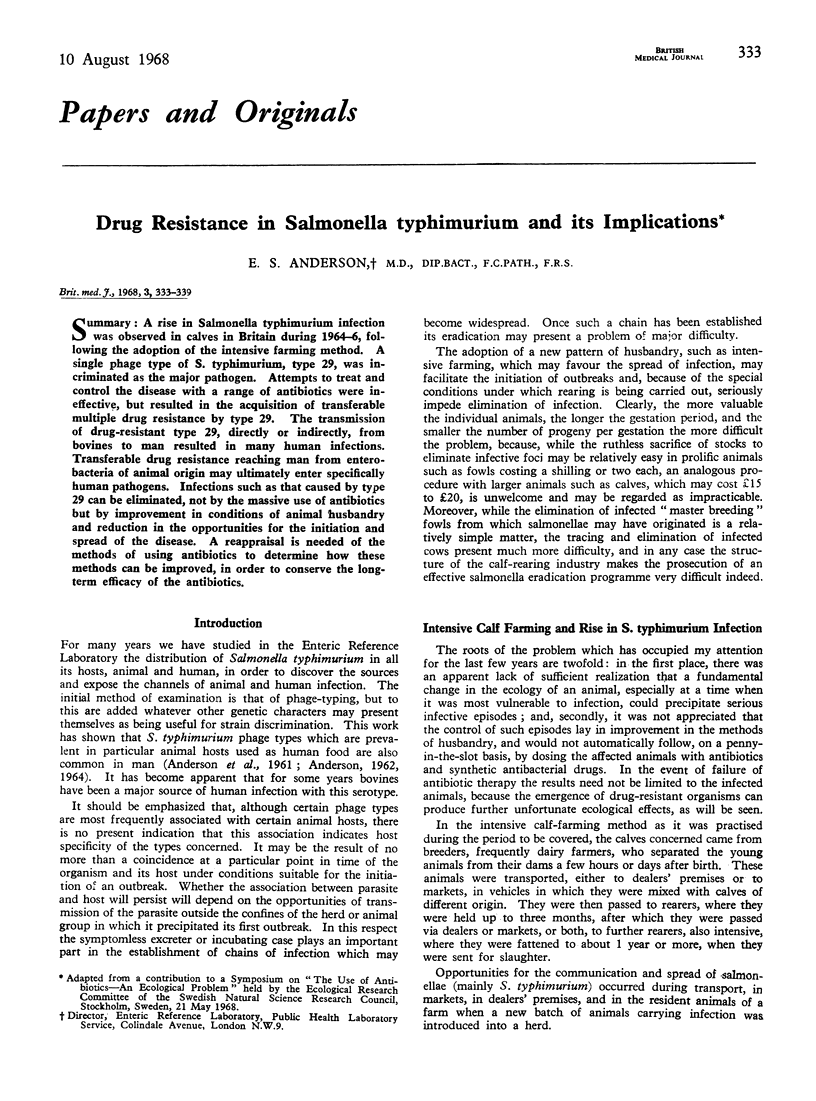
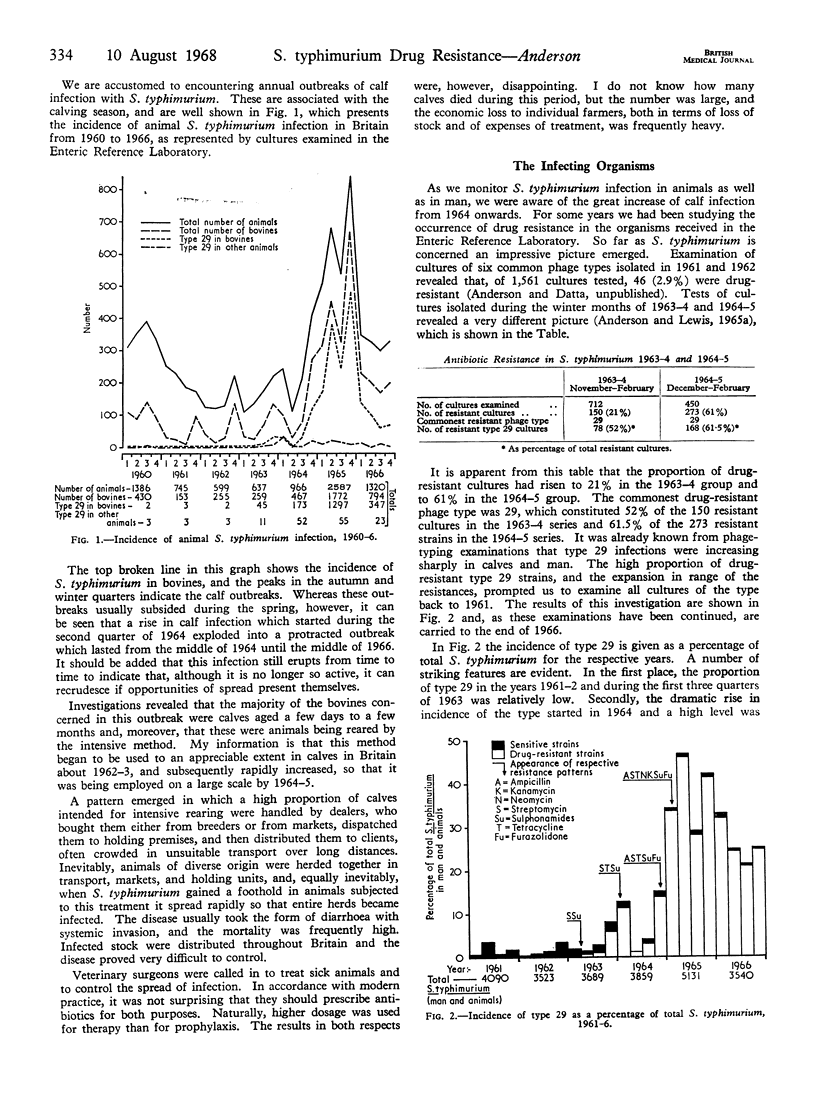
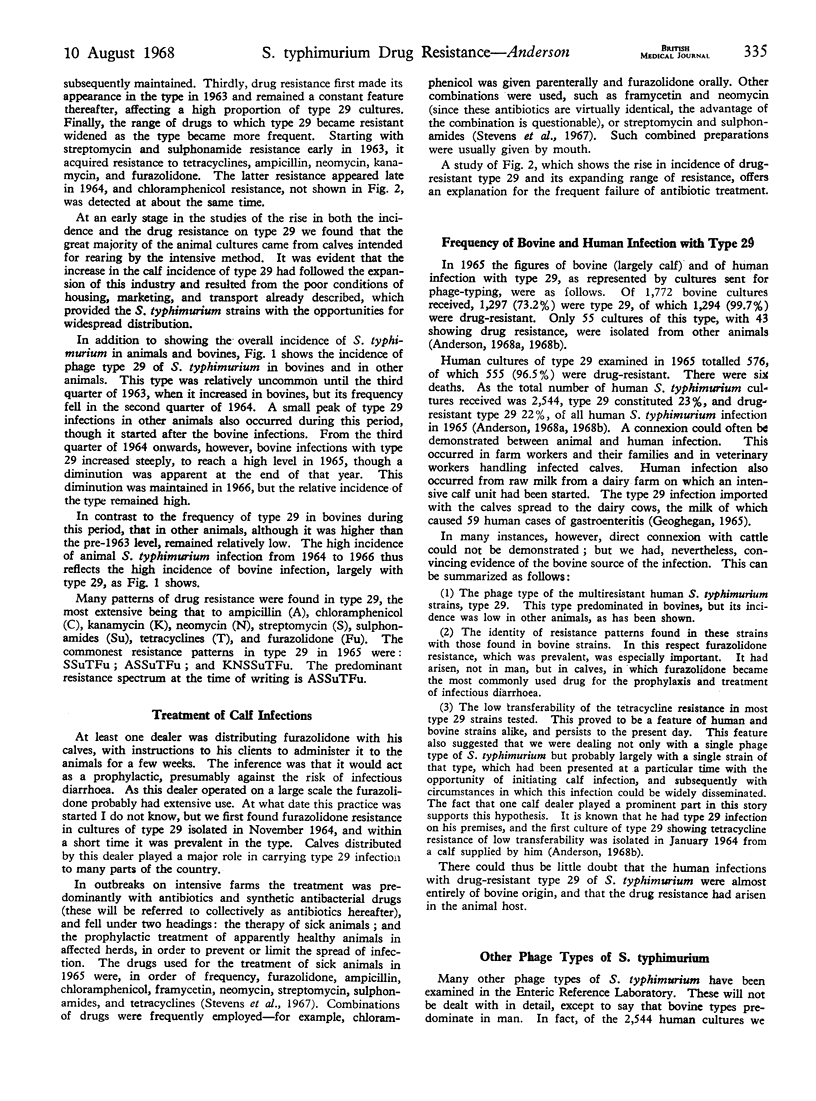
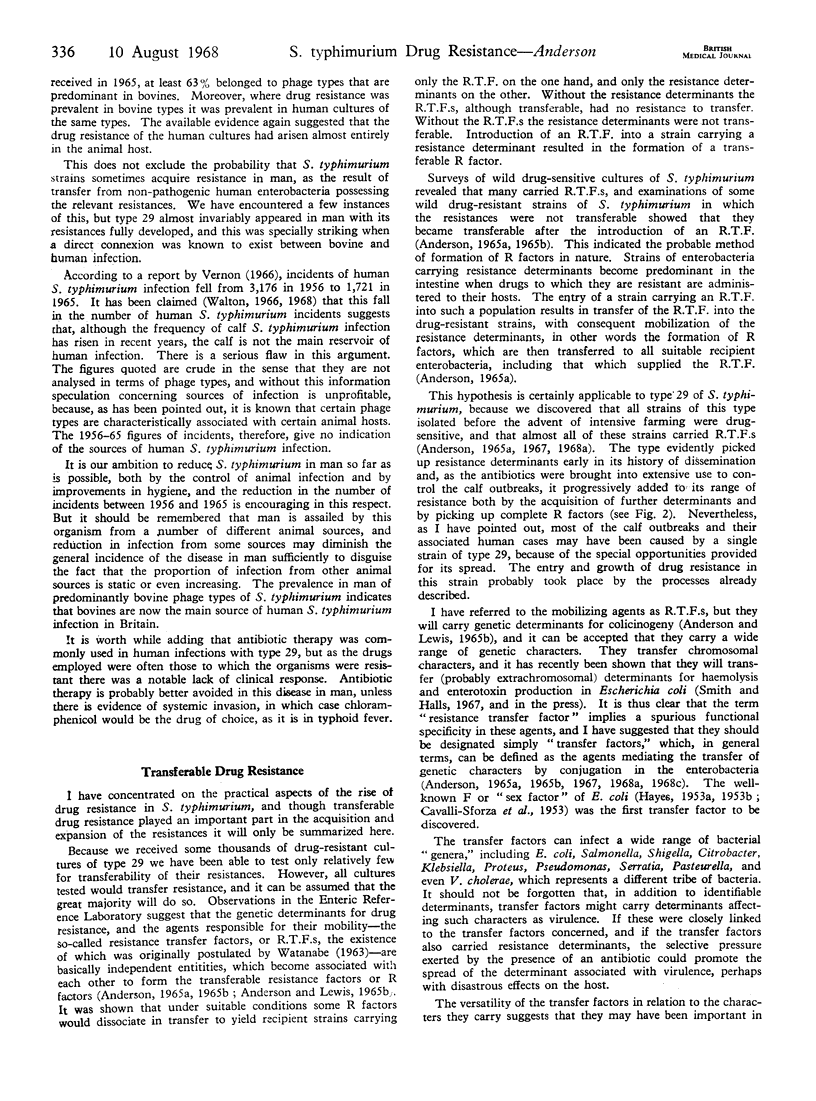
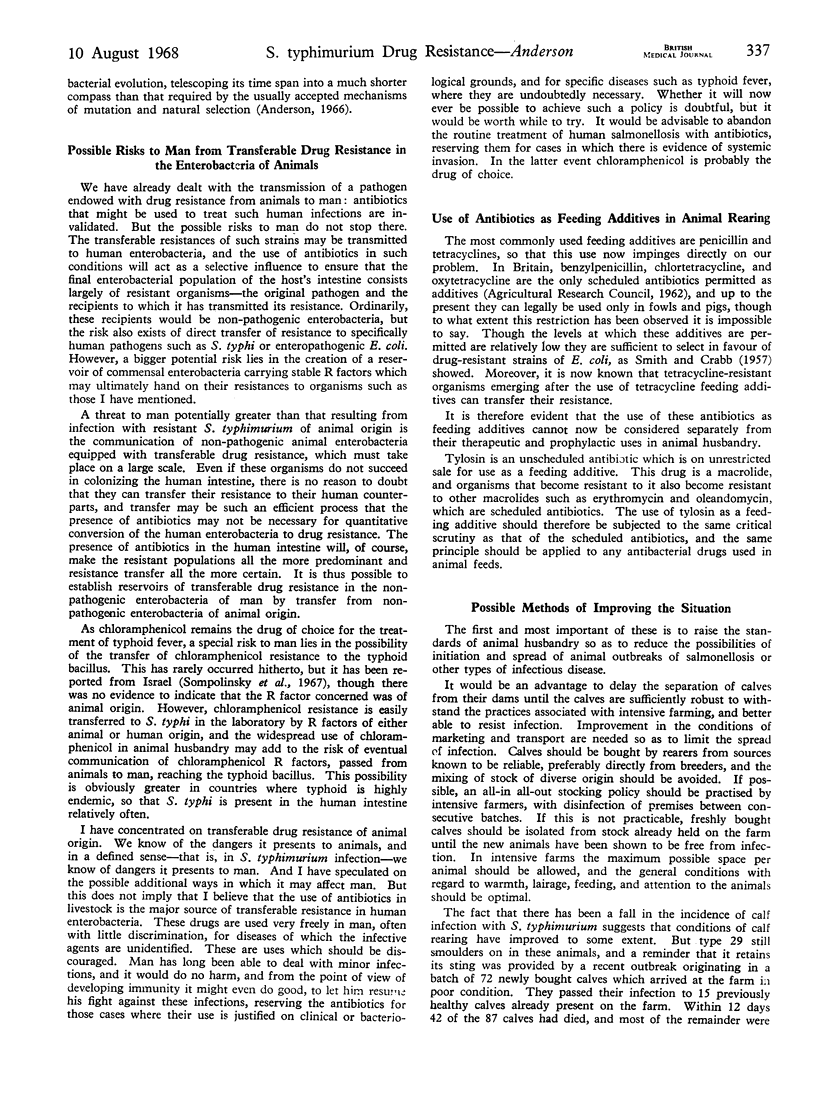
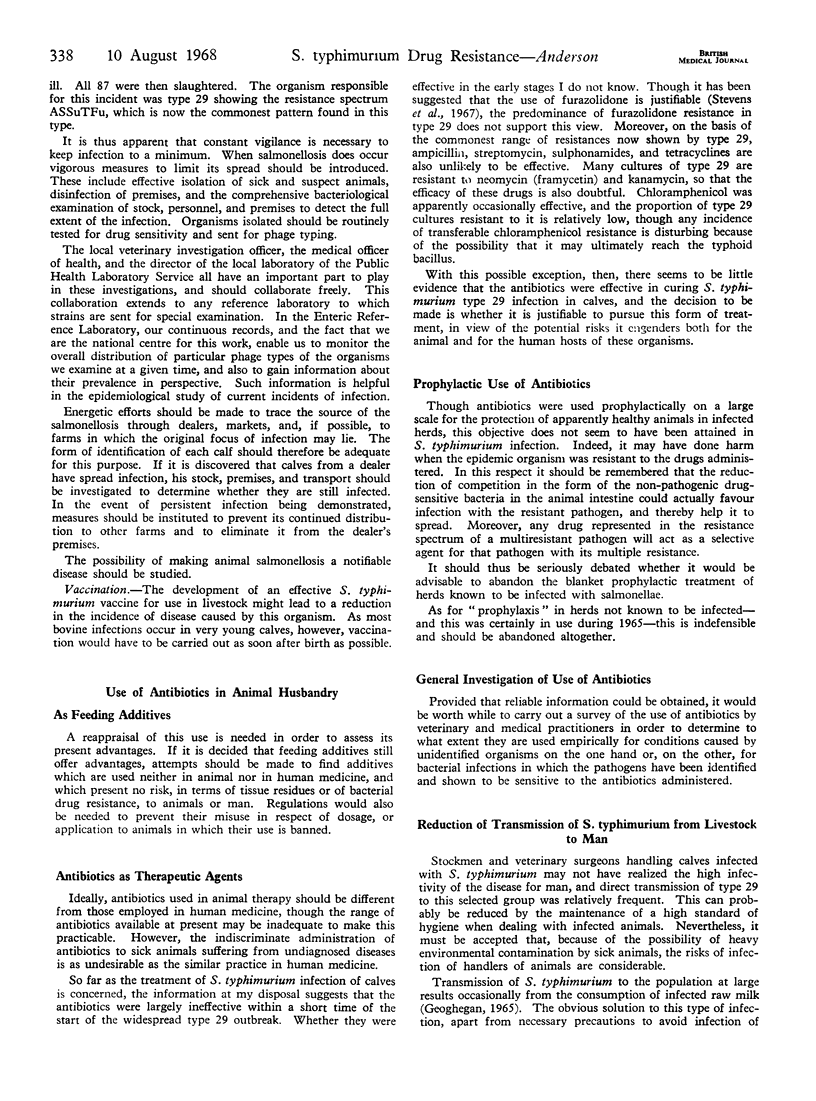
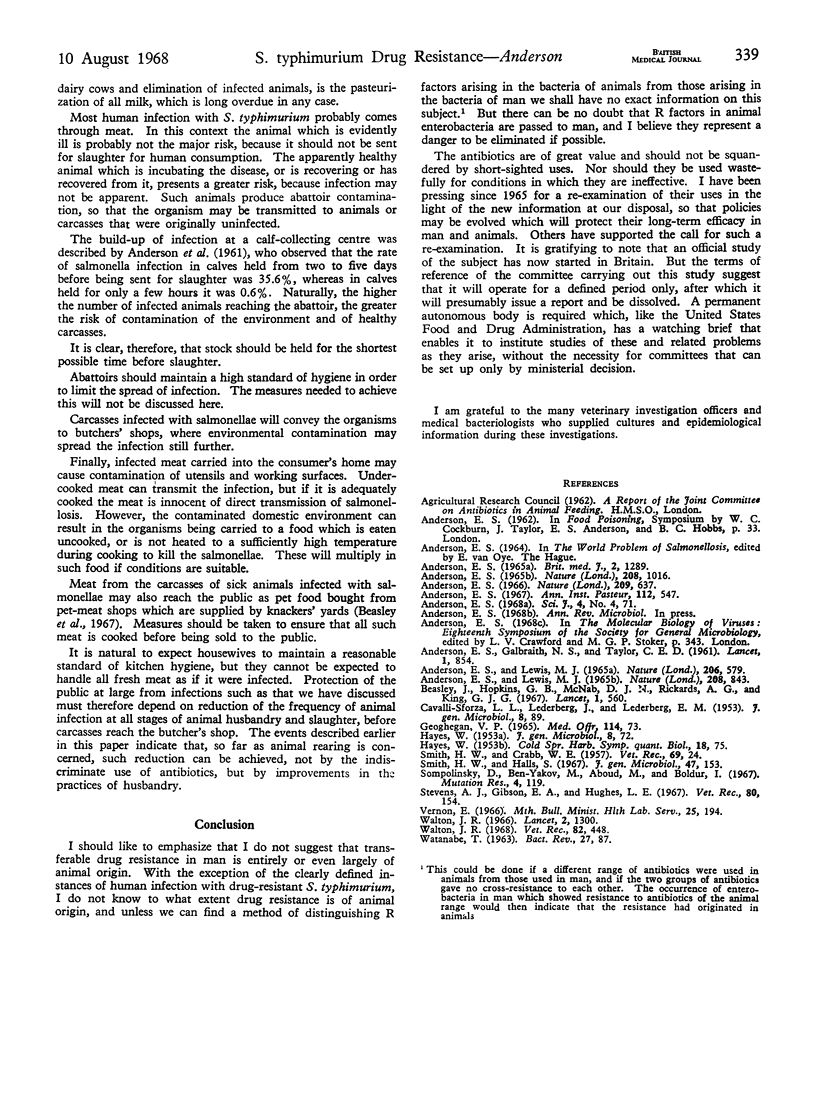
Selected References
These references are in PubMed. This may not be the complete list of references from this article.
- ANDERSON E. S., GALBRAITH N. S., TAYLOR C. E. An outbreak of human infection due to Salmonella typhimurium phagetype 20a associated with infection in calves. Lancet. 1961 Apr 22;1(7182):854–858. doi: 10.1016/s0140-6736(61)90178-7. [DOI] [PubMed] [Google Scholar]
- Anderson E. S. A rapid screening test for transfer factors in drug-sensitive Enterobacteriaceae. Nature. 1965 Dec 4;208(5014):1016–1017. doi: 10.1038/2081016a0. [DOI] [PubMed] [Google Scholar]
- Anderson E. S. Facteurs de transfert et résistance aux antibiotiques chez les entérobactéries. Ann Inst Pasteur (Paris) 1967 May;112(5):547–563. [PubMed] [Google Scholar]
- Anderson E. S., Lewis M. J. Characterization of a transfer factor associated with drug resistance in Salmonella typhimurium. Nature. 1965 Nov 27;208(5013):843–849. doi: 10.1038/208843a0. [DOI] [PubMed] [Google Scholar]
- Anderson E. S., Lewis M. J. Drug resistance and its transfer in Salmonella typhimurium. Nature. 1965 May 8;206(984):579–583. doi: 10.1038/206579a0. [DOI] [PubMed] [Google Scholar]
- Anderson E. S. Origin of transferable drug-resistance factors in the enterobacteriaceae. Br Med J. 1965 Nov 27;2(5473):1289–1291. doi: 10.1136/bmj.2.5473.1289. [DOI] [PMC free article] [PubMed] [Google Scholar]
- Anderson E. S. Possible importance of transfer factors in bacterial evolution. Nature. 1966 Feb 5;209(5023):637–638. doi: 10.1038/209637a0. [DOI] [PubMed] [Google Scholar]
- Beasley J., Hopkins G. B., McNab D. J., Rickards A. G., King G. J. Pet meat as a potential source of human salmonellosis. Lancet. 1967 Mar 11;1(7489):560–562. doi: 10.1016/s0140-6736(67)92131-9. [DOI] [PubMed] [Google Scholar]
- HAYES W. The mechanism of genetic recombination in Escherichia coli. Cold Spring Harb Symp Quant Biol. 1953;18:75–93. doi: 10.1101/sqb.1953.018.01.016. [DOI] [PubMed] [Google Scholar]
- Smith H. W., Halls S. The transmissible nature of the genetic factor in Escherichia coli that controls haemolysin production. J Gen Microbiol. 1967 Apr;47(1):153–161. doi: 10.1099/00221287-47-1-153. [DOI] [PubMed] [Google Scholar]
- Sompolinski D., Ben-Yakov M., Aboud M., Boldur I. Transferable resistance factors with mutator effect in Salmonella typhi. Mutat Res. 1967 Mar-Apr;4(2):119–127. doi: 10.1016/0027-5107(67)90063-2. [DOI] [PubMed] [Google Scholar]
- Stevens A. J., Gibson E. A., Hughes L. E. Salmonellosis: the present position in man and animals. 3. Recent observations on field aspects. Vet Rec. 1967 Jan 28;80(4):154–161. doi: 10.1136/vr.80.4.154. [DOI] [PubMed] [Google Scholar]
- WATANABE T. Infective heredity of multiple drug resistance in bacteria. Bacteriol Rev. 1963 Mar;27:87–115. doi: 10.1128/br.27.1.87-115.1963. [DOI] [PMC free article] [PubMed] [Google Scholar]
- Walton J. R. Infectious drug resistance in Escherichia coli isolated from healthy farm animals. Lancet. 1966 Dec 10;2(7476):1300–1302. doi: 10.1016/s0140-6736(66)91705-3. [DOI] [PubMed] [Google Scholar]


